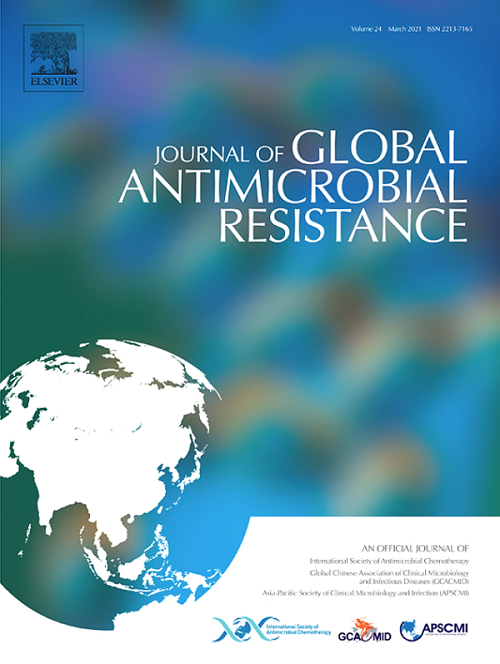标准化多药耐药定义和可视化以支持同一种健康的监测。
IF 3.2
3区 医学
Q2 INFECTIOUS DISEASES
引用次数: 0
摘要
目的:本研究旨在了解目前在One Health范围内多药耐药(MDR)数据可视化的使用情况,以及抗微生物药物耐药性(AMR)专家对多药耐药的可视化偏好和定义,重点关注One Health缺乏标准化MDR定义的动物卫生部门。方法:对目前多药耐药可视化方法进行快速范围综述。检索了六个数据库和灰色文献,包括抗菌素、耐药性、监测和图形或仪表板术语。主动机器学习模型用于初始筛选参考文献。一份在线调查被分发给自我认定的抗菌素耐药性专家,包括受访者的就业国家、工作职位、MDR的定义以及对MDR指标和可视化的偏好等问题。结果:条形图、可视化抗生素图、热图和网络图是同行评议出版物、网站和报告中最常用的可视化方法。受访者更喜欢简单的可视化,如线形图和热图。答复者使用了各种MDR定义,尽管对三种或更多种抗菌素类别的耐药性是最常见的。一些受访者主张在定义中排除内在抵抗,而另一些人则主张将其包括在内。结论:尽管历史上提出了标准化耐多药国际定义的建议,但仍然缺乏共识。受访者还表达了对MDR可视化的不同偏好。目前使用的一些可视化,如网络图,是复杂的,可能很难解释。统一MDR定义和优化可视化对于促进人群和研究之间的比较至关重要。本文章由计算机程序翻译,如有差异,请以英文原文为准。
Standardizing multidrug resistance definitions and visualizations to support surveillance across One Health
Objective
This study aimed to understand the current use of visualizations for multidrug resistance (MDR) data across the One Health spectrum and the visualization preferences and definitions of MDR used by antimicrobial resistance experts, with emphasis on the animal health sector of One Health, which lacks standardized MDR definitions.
Methods
A rapid scoping review was conducted to synthesize current approaches to visualize MDR. Six databases and grey literature were searched with antimicrobial, resistance, surveillance, and figure or dashboard terms. An active machine learning model was used for the initial screening of references. An online survey was distributed to self-identified antimicrobial resistance experts, including questions about respondents’ country of employment, job position, definitions of MDR, and preferences for MDR metrics and visualizations.
Results
Bar charts, visual antibiograms, heat maps, and network graphs were the most common visualizations employed in peer-reviewed publications, websites, and reports. Survey respondents preferred simplistic visualizations, such as line graphs and heat maps. Respondents used a variety of MDR definitions, although resistance to three or more antimicrobial categories was the most common. Some respondents advocated for the exclusion of intrinsic resistance in the definition, while others argued for its inclusion.
Conclusions
Despite historic proposals for standardizing international definitions of MDR, a lack of consensus remains. Respondents also expressed different preferences for MDR visualizations. Some visualizations currently in use, such as network graphs, are complex and may be challenging to interpret. Harmonization of MDR definitions and optimization of visualizations are essential to facilitate comparisons across populations and studies.
求助全文
通过发布文献求助,成功后即可免费获取论文全文。
去求助
来源期刊

Journal of global antimicrobial resistance
INFECTIOUS DISEASES-PHARMACOLOGY & PHARMACY
CiteScore
8.70
自引率
2.20%
发文量
285
审稿时长
34 weeks
期刊介绍:
The Journal of Global Antimicrobial Resistance (JGAR) is a quarterly online journal run by an international Editorial Board that focuses on the global spread of antibiotic-resistant microbes.
JGAR is a dedicated journal for all professionals working in research, health care, the environment and animal infection control, aiming to track the resistance threat worldwide and provides a single voice devoted to antimicrobial resistance (AMR).
Featuring peer-reviewed and up to date research articles, reviews, short notes and hot topics JGAR covers the key topics related to antibacterial, antiviral, antifungal and antiparasitic resistance.
 求助内容:
求助内容: 应助结果提醒方式:
应助结果提醒方式:


